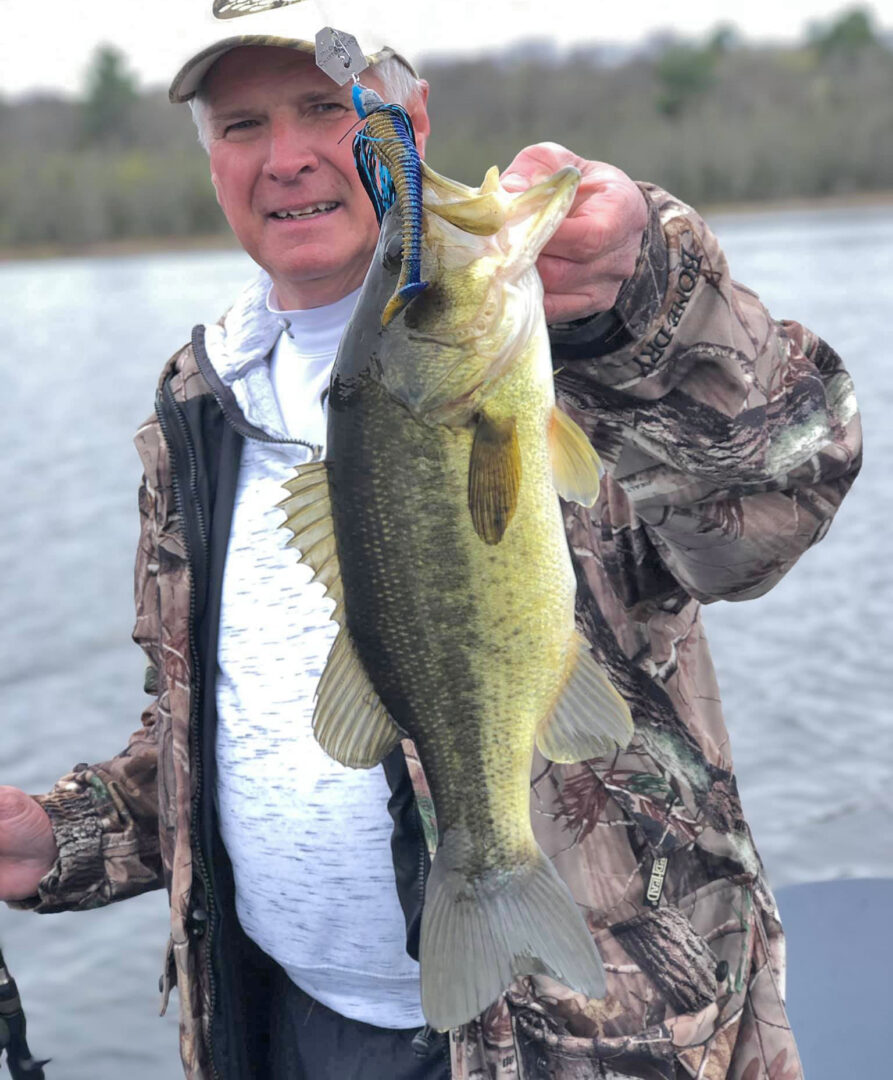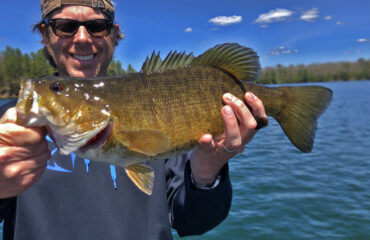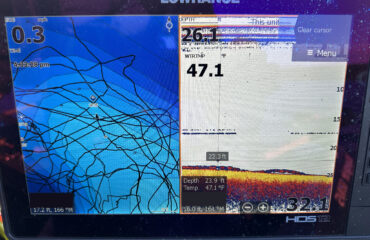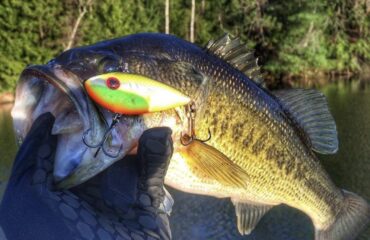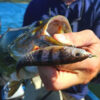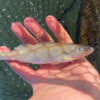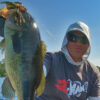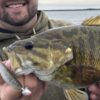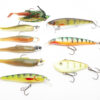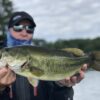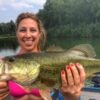Backwater Basics for Largemouths
Springtime brings warming weather and water temperatures. In return, abundant schools of pre-spawn bass invade the shallows to stage for spawn. Specific lake locations that conduct heat are instrumental in scoring early season bass fishing success. The areas that warm quickest are determined by underwater structure and the lake’s geography. Typically, shallow bays located ways away off the colder main lake with exposure to the southern skies will warm the fastest.
Nowadays in the north, catch and release bass season is open year-round. Anglers eager for ice-out early season bass opportunities no longer need to wait like everyone else until the first Saturday of May, the traditional gamefish season opener.
Following ice-out, the fertile backwater systems and side channels of large lake chains and slow gradient rivers lead hungry largemouths to an awakening oasis of underwater life.
Whether guiding or leisure fishing, we’re always looking for the best habitat that differs from the rest of the fishery. Across many of the flowages and drainage lake systems of Wisconsin, one of the best explorations and fishing efforts is finding a backwater area that nobody else is fishing.
Drainage Systems
Creeks and rivers, channels and thoroughfares, river oxbows, swamps and marshes, beaver sloughs and ditches lie mostly in obscurity from the mainstream of fishing destinations, and that’s alright with me. While the smaller quieter waters fail to attract large numbers of anglers and their oversize watercraft, its warming fertile waters will attract hungry active bass and hold productive fishing through the spawning period.
Spring through summer, backwaters attract and concentrate big bass. Their habitats can be thick and rich with diverse emergent and submergent plant species. Another characteristic of them can be the abundance of timber and wood cover, and the element of protection from fishing pressure and the rest of the lake or river system. In high water years, they are home to virgin bass fisheries.
Eutrophic Lakes
Eutrophic lakes are exceptionally fertile, shallow, warm and heavily vegetated. Seldom deeper than 10 to 15 feet, they are bowl shaped and often lack well defined structure. They tend to have silted muddy bottoms, and may feature boggy and heavily submerged wooded shorelines and tannic stained water. Often, there is no shortage of emergent and submergent vegetation in them either.
Overlooked fishing areas like backwaters exist along the outskirts of several popular lake chains where navigation channels and swamps abound. Finding them requires nothing more than knowing how to access, knowledge of the fishery, and layout of the terrain. Eutrophic lakes and their inter-connected waterways will usually contain these habitat rich bass kingdoms.
Backwaters are no-brainers during the spawning season. In spring, they are at peak productivity, supercharged by the abundance of baitfish and spawning largemouths. While the system’s main lake areas could be delayed by a cold spring, these sheltered areas will behave like aquariums – drawing heat and holding several fish species.
Z-Man Chatterbaits for Early Season Action
As water warms, fish will infiltrate throughout the system. This will be a good time to cover water, especially if worked thoroughly and methodically. Backwaters are spot-oriented, and may contain dozens to pick apart. Horizontal search baits are top options.
Ripping and cranking 3/8 oz. and ½ oz. Z-Man Freedom Chatterbaits and Jack Hammers through the shallows triggers exhilarating strikes from early season largemouths. Bang ‘em over wood and rip through weeds. Rig with a black & blue Bizz Baits Killer Craw for best results.
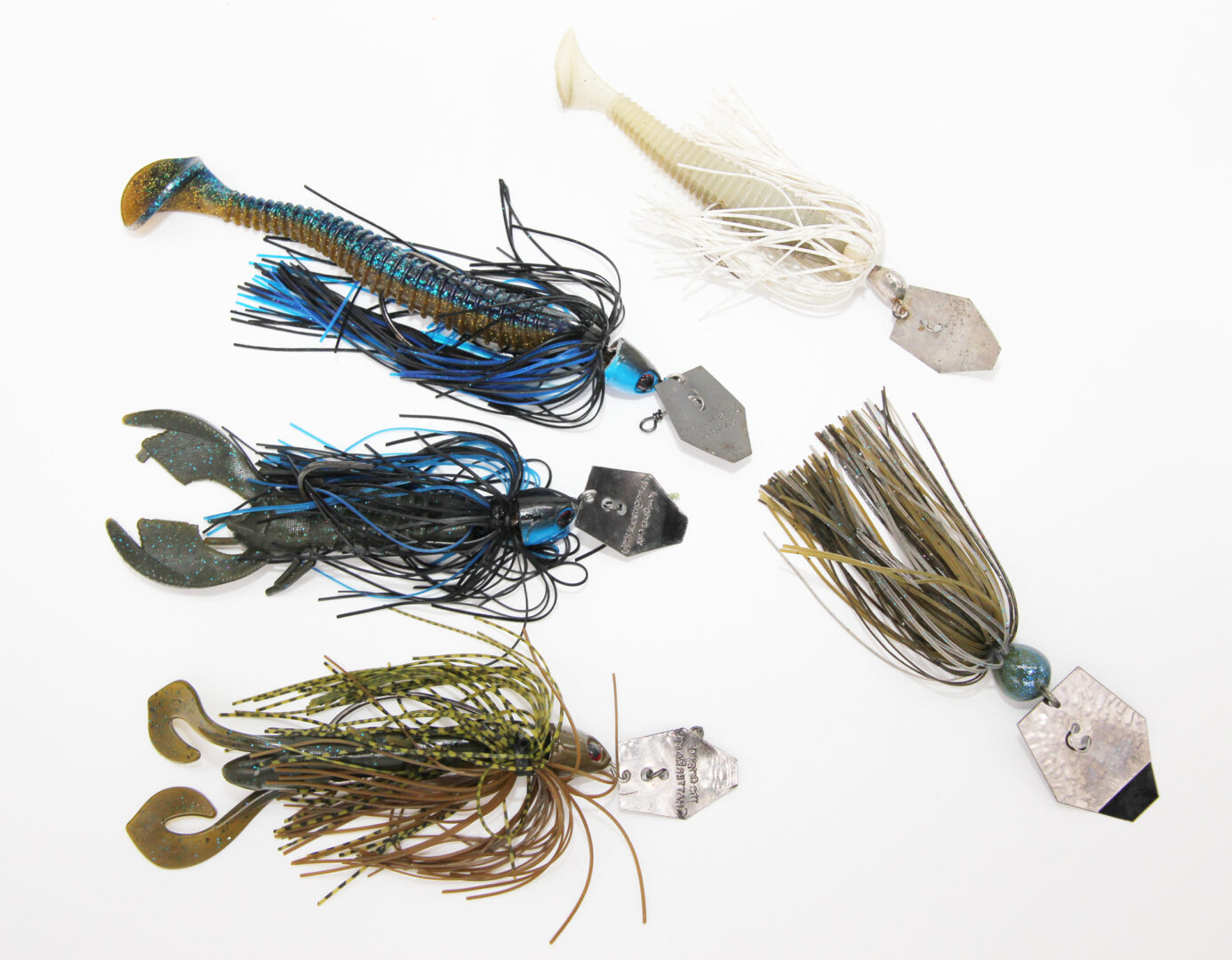
I began fishing with chatterbaits shortly after their original introduction in 2005. This southern application made a seamless transition to our shallow, heavily vegetated northern bass fisheries. The technique has since become one of my first tools of the trade in early spring.
Fishing with chatterbaits is about power, aggression and attention. It’s one of the most effective offerings for habitat-rich waters with diminished clarity.
Varying in sizes between 3/8 ounce to 1/2 ounce models, Z-Man’s variety of chatterbaits feature a unique head design, different blade sizes from oversize XL models to down-sizers, and blade and harness that produces incredible action and vibration.
The bladed jig works exceptionally well in early season wherever you would fish a spinnerbait or swim a jig. The skirt patterns in combination with your jig trailers of choice gives enhanced action and attraction.
Most chatterbaits get fished with slender trailers that includes split tails and shad tails, but I encourage you to get creative if you want to generate increased action and several more strikes. For my ideal rigging style, I turn to 4.8″ paddletails with a wide kick, craw trailers, and twin tails. Trailer decisions obviously depend upon habitat and cover and however it allows the soft plastic additions to perform.
Often, the biggest largemouths will be triggered by a larger bulkier trailer. If favoring steady retrieves, I use big 4.8” paddletails that generate a wide wobble and tail kick such Bass Assassin Boss Shiner, and Grande Bass Kick Back Shad. If fish are responding to slower and subtler retrieves, I’ll pair the chatterbait with a 4” craw or creature instead.
Burning a chatterbait is an ideal search tool for target-rich environments like backwaters. Without ever getting snagged, it can be launched through stump fields, ripped through emergent and submergent vegetation, and burned past beaver houses and laydowns – all of which shelter largemouth bass in early spring.
I don’t visit any backwater without, at minimum, medium-heavy rods. For chatterbaits, I recommend the St. Croix Mojo Bass Glass Rip-N-Chatter (MGC72HM). My setup is complimented with a 7:3.1 gear ratio Quantum PT reel spooled with 20 lb. Cortland Masterbraid.
As spring quickly progresses once water temperatures warm and fish get closer to spawning, I seek wood, stumps, lily pad root systems, and flooded bushes. Largemouths will be utilizing these forms of cover and protection for their nesting purposes. Pitching and flipping strategies will dictate fishing success when fish hold tight to these locations, but that will be a new subject for another day.
As the spring season establishes and peaks, big fish will be more prevalent and vulnerable.
The seclusion and terrain makes backwater systems difficult and challenging to access by boat. If you’re looking to tap into virgin fisheries for some seasonal largemouth bass fishing opportunities, seek the protected backwaters of your favorite drainage systems during the next several weeks to experience some of the best fishing they offer.


